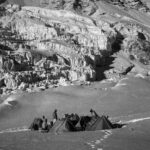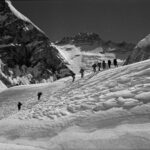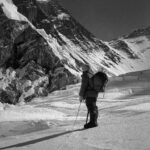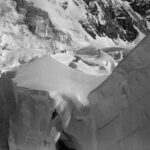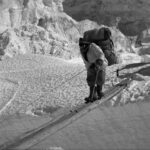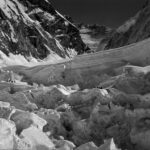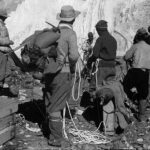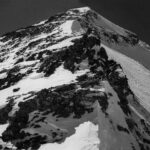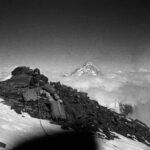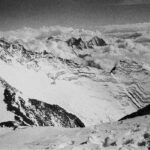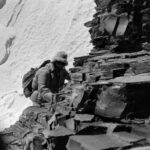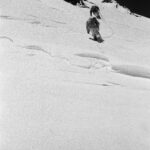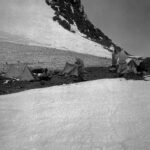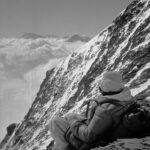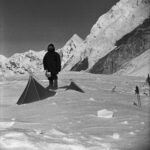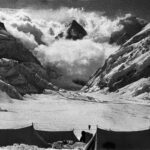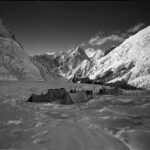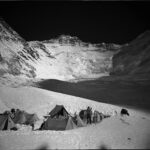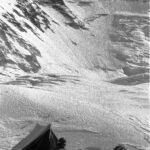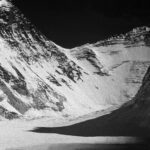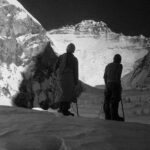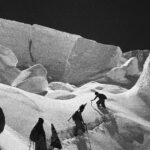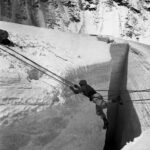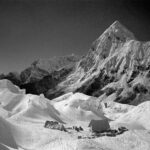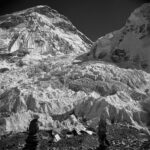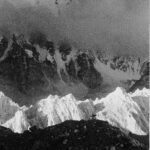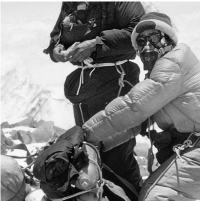Expedition Participants, Geneva Everest Expeditions, Spring and Autumn 1952
Expedition Participants, Spring 1952
1897 – 1983, Leader As an experienced expedition participant with experience of the Arctic, deserts and the Himalayas, and a major mountaineering career, Dr. med. Wyss-Dunant was the obvious choice of leader for the co-ordination of mountaineering and scientific groups in the first expedition to the south flank of Everest. Important progress was made in his advanced investigations into circulation reactions and physiology at high altitude in the Everest region, as well as the associated work on the development of oxygen equipment for use at high altitude. 1911 The tireless cross-country skier Ernst Hofstetter acted as the materials and supplies manager. He hung around longer in the middle camp, and only arrived at the higher altitude with the second South Col group. His absolutely striking level of fitness was undoubtedly due to the extended period of acclimatisation. Hofstetter was strong and less vulnerable to altitude problems, and was a welcome help during the evacuation of Camp VI for the group stuck on the South Col with their battered supplies. 1926 As the youngest participant in the spring expedition, Jean-Jacques Asper distinguished himself by his courage and skill as he traversed the huge diagonal crevasse above the ice fall. After two unsuccessful pendulum swings on the double rope, he climbed deep down into the ice abyss, succeeded in straddling the chasm, and climbed the up the narrow notches in the upper crevasse wall until he managed to reach a hump of corn snow. From there, he was able to move onto the upper lip of the crevasse. The rope bridge constructed as a result of this cool acrobatic manoeuvre was the real key to the higher cirque. Gabriel Chevalley 1918 – 1990 Expedition Doctor The doctor, Gabriel Chevalley, and mountain guide, Raymond Lambert, were the only Swiss nationals who took part in both the expeditions in 1952. Gabriel Chevalley was not a novice in the Himalayas, and developed into a spiritual leader of great quality. He acted as doctor to the group of mountain climbers in the pre-monsoon expedition, and made an important contribution to the evacuation of the South Col under dangerously worsening conditions. As leader of the post-monsoon expedition, he bore the heavy responsibility for withstanding the winter storms. Raymond Lambert acted as a tower of unbending strength in both expeditions. He was able to call upon his terrific fitness level and the long experience he had gained as a guide in the western Alps. Immense energy combined with healthy discernment made him the real source of power at high altitudes in the mountains in both expeditions. In the dreadful conditions that beset the post-monsoon expedition, he had to rise above his own needs and appear as a superman for the sake of his colleagues. The advance to the incline of the southern summit, with which he concluded the pre-monsoon expedition, remains extraordinary and unforgettable. 1911–1983, Chief Engineer As specialist mountain climbing leader of the pre-monsoon expedition in 1952, René Dittert was able to combine significant experience of the Himalayas with the real zeal of a mountaineer and born improviser. The dynamic combination of desire and ability in this firebrand provided particularly powerful indicators for the extraordinary enterprise on Everest. Dittert followed the principle set by Nelson, never to ask someone to do anything that he would not be prepared to do himself. His team spirit drove him to the edge of self-denial, putting others first and never denying anyone his chance. 1908 – 1981 In a long and loyal partnership with Raymond Lambert and René Dittert, this lightly-built, wiry mountaineer tackled all the well-known names in the Western Alps. He and Léon Flory stepped back on the south-west ridge of Everest in favour of the Lambert-Tensing rope team, and waited on the South Col for their two colleagues to return. René Aubert embodied all the major characteristics of a highly experienced mountaineer. 1910 – 2000 Paymaster of the spring expedition and tireless pathfinder, Flory was the first to push forward over the threshold of the high cirque. It was left to him, together with his rope team-mate René Aubert, to climb up the south-west ridge of Everest, and to make the selfless gesture of handing the camp site on the ridge over to the Lambert-Tensing rope team. 1906 – 2002 As a snow and avalanche specialist, and an engineer at the Swiss Institute for Snow and Avalanche Research on the Weissfluhjoch, it was Andre Roch’s duty to lead the tricky climb through between Camp II and Camp III, closely under overhangs on the western shoulder of Everest. As one of the most experienced mountaineers in the Alps, and an outstanding high mountain photographer, Andre Roch worked on the pictures for the colour film of the expedition. Many of the finest images in this report come from his camera. 1914 – 1986, Sirdar He might not have been Swiss, but he was certainly an important participant in the 1952 Swiss expeditions. Tensing acted as sherpa sirdar for both expeditions. This delicately-built descendant of the Bhotia was spiritually and physically extremely capable. On earlier Himalayan expeditions run by the Swiss Foundation for Alpine Research, he had been pulled out of the rank of bearer, trained as a mountaineer and promoted to sirdar. Recognised as a strong-willed character, obsessed by a passion for the mountains, he was automatically accorded full authority by the bearers in the advancing caravans, and all the sherpas, even those who were most experienced. Tensing worked to the limits of his strength in order to succeed at any given task. As rope partner to Raymond Lambert, he laid the foundations for his participation in the 1953 expedition. There, he was assigned to one of the two summit rope teams, and climbed the highest summit in the world in the company of Edmund Hillary.
Edouard Wyss-Dunant
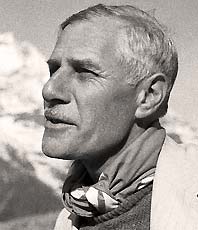
Ernst Hofstetter
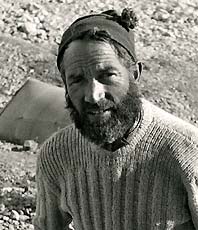
Jean-Jacques Asper

Gabriel Chevalley und Raymond Lambert
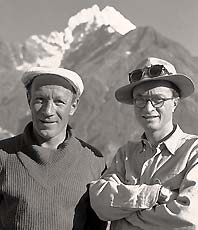
Raymond Lambert 1914 – 1997
René Dittert

René Aubert

Léon Flory

André Roch
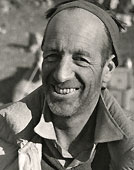
Tensing Norkey Sherpa
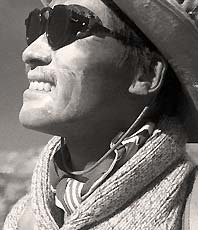
Escort study group, Spring Expedition 1952, UNI Geneva
The Scientists Augustin Lombard, Dr. sc. nat. and Professor of Geology, accompanied the spring expedition in 1952 up to the basin of the Khumbu glacier. He did this in order to complete his geological records right across eastern Nepal by means of stratigraphic insights into the tectonics of the covering structure in the Everest massif. The botanist Albert Zimmermann climbed up to the high cirque. Beneath the south wall of Everest, at almost 6400 m, he discovered the highest plants ever found, a saxifrage and a navelwort. Dangbar Singh accompanied Professor Lombard as interpreter on his excursion through eastern Nepal. 1905 – 1993
Augustin Lombard und Albert Zimmermann
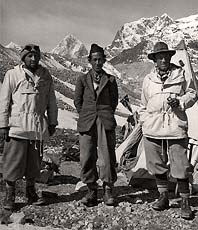
Augustin Lombard 1905 – 1987, Professor of Geology
Albert Zimmermann 1907 – 1982, Botanist
Marguerite Lobsiger-Dellenbach
Director of Ethnology. Museum of Geneva
Expedition Participants, Autumn 1952
Gabriel Chevalley 1918 – 1990 Expedition Doctor The doctor, Gabriel Chevalley, and mountain guide, Raymond Lambert, were the only Swiss nationals who took part in both the expeditions in 1952. Gabriel Chevalley was not a novice in the Himalayas, and developed into a spiritual leader of great quality. He acted as doctor to the group of mountain climbers in the pre-monsoon expedition, and made an important contribution to the evacuation of the South Col under dangerously worsening conditions. As leader of the post-monsoon expedition, he bore the heavy responsibility for withstanding the winter storms. Raymond Lambert acted as a tower of unbending strength in both expeditions. He was able to call upon his terrific fitness level and the long experience he had gained as a guide in the western Alps. Immense energy combined with healthy discernment made him the real source of power at high altitudes in the mountains in both expeditions. In the dreadful conditions that beset the post-monsoon expedition, he had to rise above his own needs and appear as a superman for the sake of his colleagues. The advance to the incline of the southern summit, with which he concluded the pre-monsoon expedition, remains extraordinary and unforgettable. 1920 Apart from Raymond Lambert, Ernst Reiss was the only Swiss national in the post-monsoon expedition, which reached the South Col and made an attempt on the Everest ridge, which was unfortunately compromised by a severe ice storm. Ernst Reiss is known as a tireless climber in the Alps. He represented a type that would not be frightened off by major problems. 1918 Following an odyssey that took Dyhrenfurth as an afterthought on a forced march via Biratnagar to the base camp on the Khumbu glacier, the effects of lack of acclimatisation became apparent. The cameraman suffered a heavy cold that forced him to leave the ice camp at the foot of the Lhotse flank. After a short period of recuperation, he was able to fulfil his assignment by capturing panoramic views of the Pumori shoulder. We have much to thank Norman Dyhrenfurth and his large telephoto camera for quality of the film of the expedition and many of the finest shots. 1913 – 1965 As a participant in the post-monsoon expedition, Jean Buzio was denied the opportunity to ascend to the greatest heights. However, he made a brave contribution to the efforts on the ice wall to the Col ridge at the end of October, and stood his ground against the winter storms in the November. Arthur Spöhel 1917 – 1967 and Gustave Gross These two mountain guides were part of the wintry post-monsoon expedition. Spöhel had become known as a result of his solo climb of Kilimanjaro, and acted as an escort to the expedition leader. Gross, was the guide to the expedition cameraman, and therefore helped to make sure that the magnificent views from the Pumori shoulder were captured. Neither saw any action at the higher altitudes of the South Col. 1914 – 1986, Sirdar He might not have been Swiss, but he was certainly an important participant in the 1952 Swiss expeditions. Tensing acted as sherpa sirdar for both expeditions. This delicately-built descendant of the Bhotia was spiritually and physically extremely capable. On earlier Himalayan expeditions run by the Swiss Foundation for Alpine Research, he had been pulled out of the rank of bearer, trained as a mountaineer and promoted to sirdar. Recognised as a strong-willed character, obsessed by a passion for the mountains, he was automatically accorded full authority by the bearers in the advancing caravans, and all the sherpas, even those who were most experienced. Tensing worked to the limits of his strength in order to succeed at any given task. As rope partner to Raymond Lambert, he laid the foundations for his participation in the 1953 expedition. There, he was assigned to one of the two summit rope teams, and climbed the highest summit in the world in the company of Edmund Hillary.
Gabriel Chevalley und Raymond Lambert

Raymond Lambert 1914 – 1997
Ernst Reiss

Lead mountaineer
Norman G. Dyhrenfurth
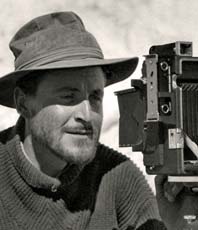
Jean Buzio
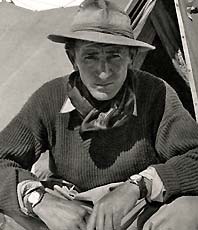
Arthur Spöhel und Gustave Gross
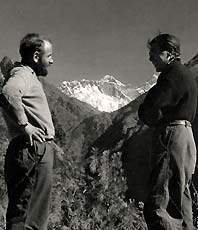
Tensing Norkey Sherpa


